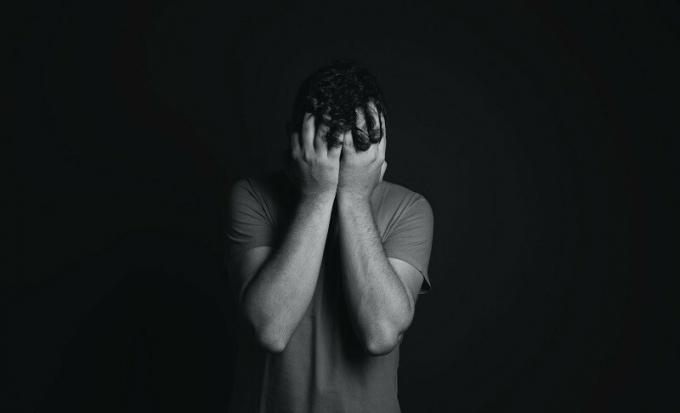The 7 main differences between depression, cyclothymia and dysthymia
Despite belonging to the same category of mood disorders, both depression and Cyclothymia and dysthymia show distinctive features that lead to different diagnoses.
We must take into account all these differences so as not to confuse these psychopathologies and to be able to use the appropriate measures to time to overcome the disorder from a diagnosis and adequate treatment (always offered by health professionals mental).
In this article we present you the main differences between depression, cyclothymia and dysthymia, so that you know its distinctive characteristics in an approximate way.
- Related article: "5 signs of poor mental health that you should not overlook"
What are these mental disorders?
Before going on to name the main differences between the terms, let's see how each one is defined.
Depression is understood as a mental disorder that is characterized by presenting pathological sadness as its main symptoms., low mood, low self-esteem, anhedonia or loss of the sensation of pleasure and decreased mental agility. In many cases, in addition, depression gives rise to persistent suicidal ideation.
The definition of dysthymia or persistent depressive disorder is relatively imprecise, since it is understood as mild depression, but with a longer duration of affectation. Of course, it also poses a significant danger to the physical integrity of the person, since it gives rise to self-destructive behaviors through unhealthy habits and increases the risk of developing other psychopathologies.
Finally, Cyclothymia is defined as a lability, variation of mood from one extreme to the other, that is, from a sad state to a relatively euphoric state.
- You may be interested: "Major depression: symptoms, causes and treatment"
Main differences between depression, cyclothymia and dysthymia
Despite classifying the three mental disorders within mood disorders, the characteristics that define the three terms are different and will lead to different patterns of presentation of affective disturbance.
1. Group of disorders to which they belong
As we have already pointed out, the three pathologies are classified within mood disorders. Within this classification there are two groups: depressive disorders and bipolar disorders. Well, in reference to major depression and dysthymia, these two conditions are considered to be part of depressive disorders.
In contrast, cyclothymia is defined as a type of bipolar disorder with quantitative and qualitatively different from the rest of the variants, but despite this, it is included in this table clinical.
- Related article: "The 6 Types of Mood Disorders"
2. Main symptoms of each disorder
Major depressive disorder presents as characteristic symptoms: depressed mood most of the day (pathological sadness), decreased interest in or ability to experience pleasure (anhedonia), loss or increase in appetite or weight (a change of more than 5% in a month), insomnia (difficulty sleeping) or hypersomnia (increased sleepiness), psychomotor agitation or slowing, fatigue or feeling of loss of energy, feelings of worthlessness and guilt, decreased ability to think and concentrate, or repetitive thoughts of death or suicidal thoughts. Of all these symptoms, at least five must be fulfilled and one of them must be number 1 or 2.
Dysthymia shows, as the main symptom and which must be present, a sad mood most of the day, most days. Apart from the previous criteria, two or more of the following symptoms must be shown: loss or increase in appetite, insomnia or hypersomnia, lack of energy or fatigue, low self-esteem, difficulty concentrating and making decisions, or feelings of hopelessness
Finally, depressive symptoms and hypomanic symptoms must be present in cyclothymia criteria are not met to make a diagnosis of a depressive or hypomanic episode. Of the latter, hypomania is characterized by abnormally elevated or expanded mood and abnormally increased intentional energy or activity, along with three or more more of the following symptoms: inflated self-esteem and feelings of grandiose, decreased need for sleep (only needs three hours), verbiage and talkativeness, fugue ideas or racing thoughts, easily distracted, increased activity or psychomotor agitation, and high involvement in pleasurable activities with consequences serious.

- You may be interested: "How Mindfulness Helps Regulate Sadness?"
3. Minimum duration of each disorder
Apart from showing different symptoms, different durations are also necessary to be able to diagnose each disorder. Thus, for depression, five of the aforementioned symptoms must be present for at least two consecutive weeks. On the other hand, both in the case of dysthymia and cyclothymia, the temporality required will be greater, since in both cases they are disorders of greater persistence and chronicity.
To diagnose dysthymic disorder or persistent depressive disorder, which is the name assigned to it in the American Psychiatric Association Diagnostic Manual 5th edition (DSM 5), sad mood most of days must be present for a minimum of two years (one year if the patient is a minor). It also has to be fulfilled that during this period of time you cannot go more than two months in a row without presenting the Criteria A and B referring to persistent sad mood and the two or more complementary symptoms that must be show.
With reference to dysthymia, an episode of depression may appear during the period of the disease older, in this way we diagnose dysthymia and specify if the depressive episode is currently present or not.
As we have said, cyclothymia is also a persistent alteration, but in this case of a bipolar type, symptoms must be present for at least two years, being able to be only one if the subject is a child or an adolescent. Also during this time interval of two years the symptoms have been shown at least half the time and the individual has not been more than two months without having symptoms.
4. Age of onset of each disorder
The typical age of the first appearance of the disorder is also different. With regard to major depressive disorder, the age range where the affectation can most likely appear is from 18 to 29 years. On the other hand, the other two pathologies usually appear before, in the case of dysthymia it is common that the onset occurs in childhood (6-11 years) or adolescence (12-28) and cyclothymia during adolescence.
- Related article: "The 10 benefits of going to psychological therapy"
5. Sex in which each disorder is more prevalent
In general, mood disorders are more prevalent in women, but in the case of bipolar affectations, the prevalence between sex is equal. In this way, both in depression and in dysthymia there will be a higher percentage of women affected, in depression with a proportion of 1.5 to 3 greater in women with respect to men, and in dysthymia with a proportion of double in population feminine.
On the other hand, when cyclothymia is related to bipolarity, the proportion of men and women affected in the general population is equal, yes it is It is true that if we look at the clinical population, that is, the subjects who come to the clinic and have been diagnosed, we observe a greater proportion of women.
6. Prevalence of each disorder
Of the three disorders, the most prevalent by far is major depressive disorder, the DSM-5 marks an annual prevalence of 7%; This percentage may vary according to sex or place, since, for example, in rural populations this prevalence decreases.
Regarding dysthymia, the percentage of the annual disorder is 0.5, although in childhood the prevalence of This affectation is greater than that presented in major depression, since on average the depressive disorder shows a 2%; instead, dysthymia reaches 6.4%.
Finally, cyclothymia shows a lifetime prevalence, which refers to the percentage of subjects who have presented the disease at some point in their lives, 0.4-1%.
7. Recommended treatments
In reference to the treatment, we observed that the mode of intervention both in the disorder major depressive disorder such as dysthymia is similar, being able to carry out pharmacological treatment and psychotherapeutic.
In the case of pharmacological treatment, different drugs have been tried, such as monoamine oxidase inhibitors (MAOIs) acting mainly increased serotonin, norepinephrine and tyramine; tricyclics that increase norepinephrine, serotonin, and dopamine, and serotonin reuptake inhibitors that increases the concentration of this neurotransmitter, the latter are the most used, since they show fewer effects secondary.
But it has been proven that pharmacological treatment alone is not enough. For greater efficacy, it needs to be complemented with psychological treatment. The most tested and the one that has obtained the best results is the cognitive-behavioral treatment, where techniques are used both behavioral, (for example, the planning of pleasant and activating activities to provide sources of motivation and stimulation), as cognitive (where, for example, cognitive restructuring is worked on in order to improve the dysfunctional beliefs of the patient).
Instead, drugs used to treat cyclothymia will be more similar to those tested for bipolar disorder, but at lower doses. For example, mood stabilizers such as carbamazepine or lithium may be prescribed. Regarding therapeutic treatment, cognitive-behavioral treatment is also used, although another treatment that focuses on the interpersonal sphere and rhythm is emphasized. social, since in patients with this psychopathology it is very important to keep the routine of sleep, food and activity schedules stable so that the person does not destabilize.

